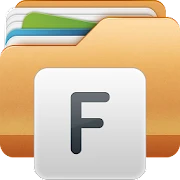What is File Manager Apps?
File Manager productivity focuses on accelerating routine file tasks by organizing content presenting accessible controls that reduce friction and confusion. Clear hierarchical views, combined with contextual breadcrumbs and lists, help users quickly locate folders and files without extra navigation steps. Search functions with keyword, metadata, and date filters bring precise results, reducing time wasted opening irrelevant documents and media quickly. Batch operations allow users to select multiple items to copy, move, rename, compress, or delete without repeating individual actions manually. Preview panes and quick actions reduce the need to open applications, enabling rapid triage of images, documents, and video files. Keyboard shortcuts, customizable toolbars, and drag and drop gestures speed common tasks and lower the effort needed for repetitive movements. Filters and smart sorting highlight recent edits, frequently accessed items, and tagged project files so users focus on relevant materials. Automation features, including macros, saved workflows, and simple scripting, convert repeated manual sequences into one click routines that run predictably. Transfer queues and background operations keep the interface responsive during large transfers, allowing users to continue productive work without interruption. Undo, conflict indicators, and version snapshots reduce anxiety about mistakes, permitting safe experimentation and faster iteration when organizing complex projects. Favorites, pinned folders, and custom home screens provide immediate access to project hubs, shared directories, and toolsets for task switching. Contextual menus and file-specific actions surface relevant commands when needed, minimizing visual clutter and shortening decision time for each action. Integration with network locations, external drives, and cloud containers lets teams organize resources across environments while maintaining a single interface. Search indexing, cached thumbnails, and metadata harvesting speed repeated queries and reduce disk thrashing, improving responsiveness for complex libraries significantly. A well designed File Manager makes file lifecycles predictable, lowers cognitive load, increases throughput, and helps teams deliver results consistently.
Efficient workflows in a File Manager transform scattered steps into cohesive procedures that preserve context and reduce task switching time. Templates and folder blueprints standardize common project layouts, so every iteration begins with predictable structure and reduces time spent reorganizing. Saved searches become virtual collections that update dynamically, delivering current results for ongoing tasks without repeatedly recreating complex queries manually. Task specific toolsets show only commands needed for a given phase, allowing focused editing, transferring, or publishing with minimal distraction. Context aware suggestions surface next steps based on file types, recent actions, and project relationships to accelerate decisions and completion. Checklists and in app notes attached to folders keep procedures close to content, reducing interruptions to external documentation and context. Preview driven sorting lets users scan thumbnails and descriptions, quickly separating high priority files from archival material for immediate processing. Drag staging zones allow users to group files temporarily before committing a final move or export to their destination quickly. Transfer visibility includes per file progress, estimated time, and errors with retry options, making long copy operations manageable and predictable. Task queues let users order background jobs and prioritize urgent transfers while lower priority processes proceed without disturbing foreground work. Project level metadata, including version tags, assigned roles, and status flags, support coordination across handoffs and accelerate subsequent work phases. In built publish actions standardize how assets are exported, compressed, or renamed for delivery, eliminating repetitive formatting tasks before handoff. Contextual sharing options present links, packaging alternatives, and permissions choices inline, reducing the friction of preparing files for collaborators quickly. Automated cleanup and retention policies can archive or compress older materials on schedule, keeping active workspace lean and more navigable. By embedding consistent, repeatable practices into the file management environment, teams reduce wasteful steps and improve handoff clarity between roles.
Collaboration capabilities in a File Manager streamline how multiple contributors access, review, and update shared assets while preserving provenance clarity. Shared project folders centralize resources so collaborators see the same organizational structure, reducing misplacement and version drift across teams consistently. Inline comments and annotations on files allow reviewers to attach contextual feedback without detaching discussion from the content under review. Activity logs and history timelines show who changed what and when, making audits faster and enabling informed rollbacks when necessary. Access controls at folder and file level provide granular read, write, and share permissions to prevent accidental edits enabling collaboration. Shared links can include options for expiration, download limits, or packaging formats so distribution aligns with project needs and timelines. Coordinated check in and check out workflows reduce conflicts by signaling file reservations and queuing other contributors for synchronized edits. Notifications and digest summaries let participants see relevant changes without constant context switching, improving attention management for distributed teams effectively. Locking and concurrency controls protect critical files during editorial passes, preventing accidental overwrites and commentary. Role based views show appropriate tools for each participant, so reviewers, editors, and publishers interact with interfaces matched to responsibilities. External integrations with communication tools let teams push file references and previews into conversations without detaching assets from the repository. Shared templates and export profiles make consistent deliverables easier to produce, reducing last minute formatting work before stakeholder review cycles. Audit trails and exportable reports provide managers with summaries of activity, storage trends, and bottlenecks to inform process improvements regularly. Attachment of project identifiers and tags to files supports cross referencing faster aggregation of related assets during planning iterations. When collaboration features are embedded into daily file routines, teams gain transparency, reduce rework, and accelerate delivery across distributed schedules.
Customization options let users tailor the File Manager interface to personal workflows, exposing preferred tools and hiding rarely used controls. Color coded labels and custom icons accelerate visual parsing, so users can identify projects, priorities, and file types at glance. Configurable keyboard mappings and macro recording translate frequent sequences into single key actions, dramatically shortening repetitive job times for teams. Plugin ecosystems and extension APIs allow the File Manager to incorporate specialized viewers, converters, or connectors tailored to domain needs. Scripting hooks expose common operations to automation languages, enabling batch transforms, metadata enrichment, and scheduled cleanups without manual oversight required. Per project presets capture preferences for sorting, display density, and preview sizes so switching contexts does not require reconfiguration time. Adaptive performance modes scale thumbnail quality and indexing intensity to match device capabilities and battery or bandwidth constraints during travel. Conditional rules trigger actions when files meet criteria, for example moving scanned receipts into expense folders or tagging client materials. Version management options let teams snapshot states, compare changes, and restore previous copies to simplify auditing and mistake recovery processes. User profiles preserve layout preferences, favorite locations, and recent filters, making shared workstations feel personal and efficient for each user. Preview customization supports inline rendering for code, spreadsheets, and vector images so users can inspect content without launching heavy editors. Resource monitors show storage distribution, hot folders, and growth rates, helping administrators allocate quotas and optimize archival strategies proactively today. Encrypted local caches store copies for faster access while obeying retention policies, balancing speed and compliance needs across deployments scenarios. Theme and density settings support different visual preferences and accessibility requirements, improving usability for diverse teams and reducing visual fatigue. By making the File Manager extensible and programmable, organizations can embed domain workflows into the file layer, improving consistency systematically.
Performance and reliability are central to File Manager productivity because responsiveness directly affects how quickly users accomplish daily file tasks. Efficient indexing reduces search latency, while intelligent caching minimizes repeated reads on slow storage devices to improve perceived speed consistently. Parallel transfer engines use multiple streams to maximize throughput, especially useful for large media libraries and cross continental file movements. Low overhead UI rendering and asynchronous operations keep the interface fluid even when background tasks consume bandwidth or disk resources. Smart thumbnailing creates small previews using adaptive quality settings so galleries load promptly while preserving sufficient detail for selection purposes. Robust error handling and retry logic prevent transient failures from interrupting long moves and reduce the need for manual intervention. Storage visualization tools map usage across folders, file types, and ages, helping teams reclaim space and focus on high items. Robust synchronization ensures conflicts are detected early, with clear conflict resolution flows that let users merge changes or keep variants. Automatic integrity checks and checksum comparisons guard against silent corruption during transfers and long term storage operations across backup cycles. Local caching and prefetch strategies reduce latency for commonly accessed assets, making repeat interactions feel instantaneous for users on networks. Privacy controls allow selective metadata visibility and sharing constraints so sensitive project information is not exposed more broadly than intended. Audit friendly features export logs and change summaries for internal review cycles without requiring separate administrative tools during normal operations. Graceful degradation falls back to simplified views on constrained devices, preserving core capabilities while limiting resource consumption during heavy use. Resilience includes transactional moves and atomic renames so partial failures do not leave files in inconsistent intermediary states over time. When performance, privacy, and robust recovery are prioritized in the File Manager design, file work becomes faster and safer everywhere.


